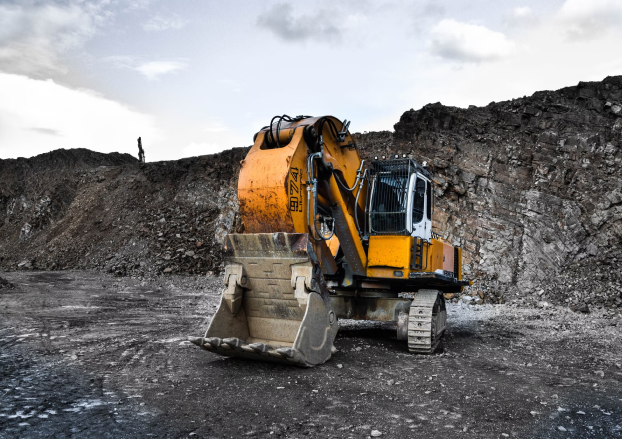Equipment Finance
Unlocking business opportunities almost always involve healthy funding. But this isn’t so easy for many entrepreneurs. Australian small businesses experience issues when applying for loans. In fact, 40% of business borrowers pointed out difficulties in fast-tracking the application and appraisal process, securing reasonable interest rates, and presenting needed collateral. One crucial loan type is equipment finance. It’s a solution that enables businesses to access essential assets without bearing the upfront costs. Companies aim to have as little upfront costs as possible, and so a financing option like this works to avoid incurring too much expense for tools and equipment. Let’s explore how equipment finance works, what types of purchases are allowed under this financing, and what eligibility criteria do businesses need to leverage this business loan. What is equipment finance? Equipment finance is a business loan that lets your company purchase business equipment, tools, or fixtures and use these purchased assets as security for the loan. The equipment itself often serves as collateral for the loan. And depending on the type of asset purchased, the business may be able to take ownership of the tool or equipment at the end of the loan term. Equipment finance works when you need to bolster daily operations, are ready for an expansion, or a specific innovation that requires certain tools. How is financing different from leasing equipment? Both financing and leasing allow your business to access needed equipment. The difference is a lease works as a rental agreement, while financing lets you own the tool or business equipment outright. Leasing comes with monthly repayment towards the equipment. Depending on the terms of the lease, you can either rent it over a given period and return it afterward or own the equipment with a balloon payment at the end of the lease period. On the other hand, financing is the process of borrowing money to purchase machinery. This will typically cost more each month but may result in lower costs overall. The fact that you own the equipment outright means there aren’t any instances when you may lose access to it, unlike in a lease arrangement. And if it is unlikely to be unrepairable or obsolete, the loan makes it easier to own the equipment – you can then use it or sell it, whatever you intend to do over the years. Which one is better for your business? It depends on the kind of equipment you need, how you want to manage the payments, and how the industry you are in changes its tools. Some equipment, like machinery, is durable and may last decades with proper maintenance. These are if you prefer to own the tool faster or to rent it for a given period. Office technology, including printers, laptops, maybe better leased as technology advances quickly and turns these tools obsolete faster. What can be purchased with equipment finance? The scope of assets acquired through equipment finance is diverse and spans various industries. Some common examples include: Machinery and heavy equipment: Industries such as manufacturing, construction, and agriculture can utilize equipment finance to acquire civil equipment like quarry machinery, excavators, concrete pumping, tractors, and more. Technology and IT equipment: Businesses can invest in computers, servers, software, and other technology essentials critical for modern operations. Business vehicles: Fleet vehicles, trucks, and specialized vehicles can be obtained through equipment finance, serving transportation and logistics needs. Medical equipment: Healthcare providers can access advanced medical devices, diagnostic tools, and equipment through tailored financing options. Business-related equipment: Tools essential in the hospitality and retail sectors can include restaurant kitchen appliances, POS systems, and store fixtures. Equipment financing may also need to meet a minimum amount, as not all equipment would need a loan to be purchased. Some tools may be too inexpensive to either finance or lease. Check out our Equipment Finance Calculator to get an estimate of how your repayments would look like. Who is eligible for equipment finance? Eligibility criteria for equipment finance can vary based on the lender and the specific terms of the loan. However, common eligibility factors include: What are the advantages of equipment finance? What about the cons? What are tax implications? Business loans will have varying rules regarding tax write-offs. For equipment finance, ongoing repayments for the machinery would not be tax deductible. You could, however, claim tax breaks on asset depreciation and interest rates. Equipment finance also benefits from GST lump sum credit, so your business may be keen to make the large sum to take advantage of the write-off. Following Australia’s 2021 Federal Budget, the temporary full expensing (TFE) rule no longer places a cap on any asset write-off. This means businesses are allowed to claim a write-off for an asset regardless of its cost – the scheme applies to businesses with a turnover of less than $5 billion. Before going ahead with your equipment financing, it’s best to speak to your accountant and a business loan professional about how you can make the most of the tax implications. Want to explore equipment finance? Talk to our business loan experts. We aren’t tied to any lender but can navigate a network of the most trusted financial institutions and specialist lenders in Australia. We can help you choose an option that is the best for your industry, your credit standing, and your overall needs. You can call us today! We’d love to talk to you. Darin Hindmarsh See Full Bio

